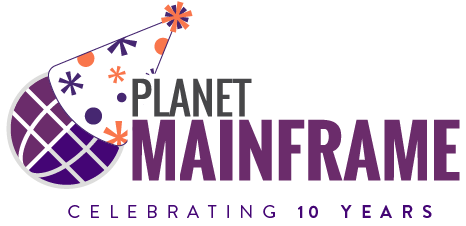IBM has done a great job of continually re-inventing the mainframe over the years to help it stay abreast of the evolving technology landscape. The z13 mainframe, for example, is the product of over $1m in R&D spend, including a host of enhancements to elevate its support for mobile, Big Data, and real-time analytics workloads. And, despite rumours to the contrary, the platform has also done an excellent job of embracing modern computing languages such as Java, and open systems technologies such as Linux.
However, perhaps one of the mainframe’s biggest challenges today is remaining accessible to a changing user base. For quite a few years the mainframe community has been aware that the user experience delivered by the platform is not a good fit for modern computer users. For example, many mainframe experts swear by the simplicity and effectiveness of the mainframe’s classic 3270 green screen interface, but to users brought up on graphical interfaces and point and click navigation – even if they are IT specialists – the 3270’s reliance on entering text and commands to move through applications seems antiquated and cumbersome.
In a recent Macro 4 survey at the GSE UK Conference – which polled 48 mainframe customers about accessibility and user experience – 60% complained that the 3270 interface looks less appealing than more modern interfaces and is difficult to get used to. 44% said it necessitates investment in more staff training while 70% said that a shortage of IT staff with mainframe experience makes it especially important to provide more user-friendly alternatives to the green screen environment.
The other big difficulty with regards to mainframe accessibility and user experience is a lack of web and mobile access to applications. I won’t spout fresh numbers about the exponential rise in mobile devices because I’m sure you’ve heard it all before.
It’s true that many mainframe shops have written ‘good looking’, user-friendly, customised interfaces to support web and mobile access to important applications: think of those z/OS applications that do the back-end transaction processing for customer-facing systems such as online mortgage calculators or hotel reservation systems. Many of these applications were initially designed to be used internally, by customer-facing staff, but were then adapted and given new easy-to-use online interfaces so that they could be accessed by millions of consumers on a daily basis.
At the same time, however, there are a great number of applications that have not yet undergone this kind of makeover, because it’s just too expensive and time consuming. At GSE, over half (54%) of the survey sample said delivering web or mobile access to more mainframe applications would help them maximize the use of the platform. However, around half also said that, although they would like to web-enable more applications, cost and resource constraints are stopping them.
The crux of the problem is that mainframes host so many applications – sometimes hundreds – that it would be just too costly to write customised web-enabled interfaces for each one. So the mainframe industry needs to offer shortcuts that do not eat up so much time and resources.
Look hard enough and you’ll find they do exist.
For example, one shortcut is to use session management software with a web interface as an instant way of web-enabling mainframe applications. This removes the need to change the underlying application or create a new interface.
As seasoned mainframers will know, session management software was first introduced around 30 years ago to streamline and enhance user access to mainframe applications. Based on the survey at GSE it is still used by nearly two out of three mainframe customers. After logging into a session manager, users can access all the applications they are authorised to use, switching between them as they need to, without having to log in and out of each one individually. They are a great time-saving and productivity tool that also offers handy features such as the ability to cut and paste information between applications (while this is par for the course today, it was a revelation when session managers brought it to the mainframe).
The new generation of web-enabled session managers present the user with their mainframe application within a web browser that responds to mouse clicks and touch screens; this delivers mainframe access from any PC or mobile device and avoids the expense and administration overhead of deploying and supporting terminal emulators.
It is possible to use other shortcuts within web-enabled session managers to go further and move away from the 3270 green screen to give applications an altogether more modern look and feel, without creating a whole new interface from scratch. There are software products available that not only automatically render existing 3270 interfaces as HTML, but also allow you to add customisation to improve usability: for example by merging several mainframe screens into one to make it easier to move through the application; adding drop down menus; or turning commands into icons.
In many ways the modern mainframe is the perfect platform for computing today, especially for addressing the requirements of the digital economy. It is capable of high volume transaction processing at speed. It is also highly reliable and has always been renowned for superior levels of security. However, if it’s going to continue to remain relevant today, the mainframe community needs to find innovative, yet cost-effective solutions to improve the user experience.









0 Comments